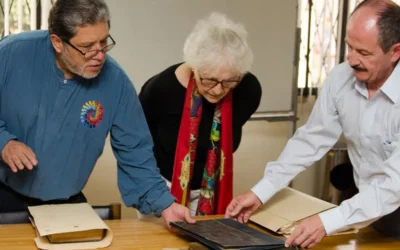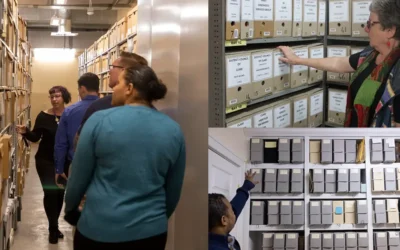Creating Reports in Collections Management Systems
Margot Note
A robust collections management system (CMS) offers ease, availability, and access to motivate use and research. Archival materials require inventory control and tracking since archivists may present them to researchers, loan them to other repositories, or place them into exhibitions.
Because archival repositories hold valuable, irreplaceable items, they benefit from automation systems with robust capabilities.
Archivists also benefit from CMS software by leveraging the powerful reporting capabilities of collection management systems that go beyond what legacy systems or other outdated reporting software can create. For instance, archivists can use reports to track popular areas in their collections. After a period of time collecting data on how users access their public-facing portal, they can analyze what researchers are seeking in their collections. With these metrics, they can highlight parts of their collections that receive more attention than expected. With this information in hand, they can re-evaluate their processing priorities. Sustained attention to the most popular collections may also lead to publications, exhibits, webinars, and other outreach projects to highlight their collections’ most popular areas.
Writing Reports
Collections management systems can present data as reports or exports. A CMS offers various canned reports, but many larger systems leverage third-party report-writing programs, such as Crystal Reports, for more complicated reporting. With an archival CMS, archivists can create their reports without programming skills. They can respond to ad hoc requests for statistical information quickly and easily or schedule reports to run automatically. In addition, they can export data in CSV and EAD whenever needed and supply on-demand and automated access to usage statistics and reporting.
For building custom reports, archivists will need to know what information they want (and where they want to present it) to shape how the report is developed. When using Crystal Reports, archivists use data maps to run a report on a specific selection of data. Building systems into the Crystal Report process can save archivists time and labor; they may wish to keep report templates that can function as a starting point and be adjusted to fit reporting needs. In that way, the effort invested in creating one type of report can be maximized by tweaking reports to suit specific needs without constructing the report by scratch.
Archivists may also wish to use a hierarchy system in their reports to save time. They can create a skeletal outline of the report’s data and continue to build it slowly, especially if the report is complex. Knowing what the report needs to reveal dictates the order of tables, groupings, and other data aspects of the report.
When assembling reports, archivists should add tables one by one instead of all at once. When creating a large and complex Crystal Report, it can be easy for tables to become chaotic. If archivists add tables and evaluate the report after each addition, it is easy to spot a problem and correct it. For example, if data is missing or the wrong data is selected, the report writer will rectify the errors more easily if report building is slow and systematic.
Exporting Data
Collections management systems can create reports that export into Excel, Word, PDF, or proprietary formats. A CMS can export data for review, backup, data transfer, system migration, or collaborative purposes. Archivists may experiment with available reports and decide what other ones may be needed in the future. A new collections management system will undoubtedly have more reporting capabilities than a legacy system.
Pertinent and Prompt
Archivists can exploit this functionality to create reports customized to leaders within the organization who most need them. Reports can be generated quickly to share pertinent, prompt information, doing away with long turnaround times to present data. Having a plethora of canned and custom reports at their fingertips allows archivists to better advocate for themselves, their resources, and their collections.
Margot Note
Margot Note, archivist, consultant, and author is a guest blogger for Lucidea, provider of ArchivEra, archival collections management software for today’s challenges and tomorrow’s opportunities. Read more of Margot’s posts, and register here for her upcoming webinar, “CMS Essentials for Success #6: Metrics and Reporting” on June 16, 2021.
Similar Posts
Enhancing Collaboration; Methods for Archivists
Archivists can enhance collaboration through user-centric approaches and efficient processing methods based on customer service principles.
Navigating Selection in Archival Practice
The archival selection process is far from straightforward, given the limitations of long-term preservation and ongoing accessibility challenges.
Responsible Stewardship in Archival Practice
Responsible stewardship is a philosophy that guides the actions and decisions of archivists in safeguarding collective memory.
A Modern View of a City’s History via ArchivEra
Brief success story on City of Regina Archives’ use of ArchivEra to manage collections of legal, historical, administrative or financial significance
Hosting service
Enjoy all of the benefits of your Lucidea solution with secure, reliable, stress free hosting
Programs & incentives
No matter your size or budget, we’ve got you covered, today and tomorrow




Leave a Comment
Comments are reviewed and must adhere to our comments policy.
0 Comments